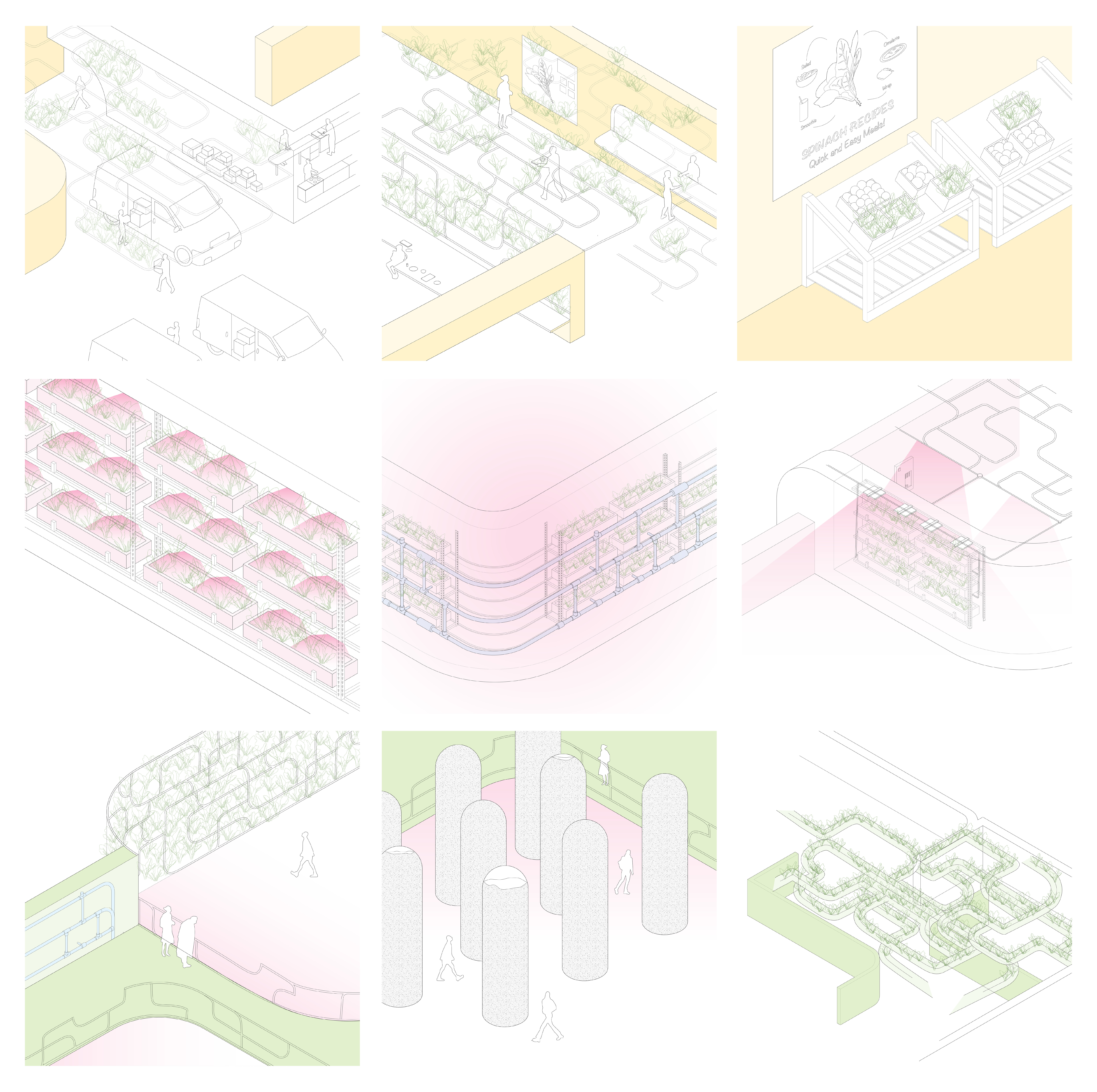PROFESSOR
ZAIN ABUSEIR
STUDIO SECTION
FOOD [FLOWS]: NARRATIVES IN SITOPIA
The United Nations estimates that the global population will grow from 7.8 billion to 9.7 billion from 2020-2050, with two-thirds of the growth occurring in urban areas. With the increase in urbanization and industrial development, productive agricultural land will continue to decrease while food demand and cost will grow.
The current food system is not sustainable, impacting our ecosystem as well as our social, economical and cultural urban structures. FOOD [flows] studio explores bringing agriculture back into the urban fabric using vertical farming models through architectural relationships and propositions. Pittsburgh, Pennsylvania is a microcosm of reimagining the way food is grown, stored and consumed. This studio proposes an infrastructure that re-engages the city with agriculture through vertical farming in the Strip District, a one-half square mile area along the Allegheny River, minutes from downtown- once home to factories and mills with food wholesalers to meet the demands of shift workers, now favored spot by tech and robotics companies and a growing residential population. The studio proposes a collaboration between a local food bank and an agricultural tech company founded by university researchers working together to create a food safety net. The studio explores spatial configurations for food production and research through vertical farming methods, food storage and distribution, considering how architectural propositions can change the narrative of food inequality and insecurity in the urban environment.
MALCOLM MCCULLOUGH
Max Coolidge
Diana Huang
ZAIN ABUSEIR
Sydney Cleveland
Muzi Li
OLAIA CHIVITE AMIGO
Jonathan Liao
Evan Meek
JACOB COMERCI
Benjamin Garcia
Dominica Kusmierczyk
LAURA MARIE PETERSON
Erica Behm,
Haley Beverlin
Lauren Conroy,
Zoë Meinke
STUDENT WORK
SYDNEY CLEVELAND
“SPINACH ON DISPLAY”
“Spinach on Display” celebrates the collaboration between the vertical farm and food bank through re-imagining the ways the structure can expose outsiders to sustainable growing methods, while also bringing awareness to the city's food scarcity. The structure is fueled by restaurant deliveries, food bank operations, soup kitchen preparations, and the dynamic energy that the Strip District attracts. From seed silos, to hydroponics, to food bank crates, to piping for spinach growth, the spinach has various routes, or life cycles, throughout the structure where users can experience the spinach production.






